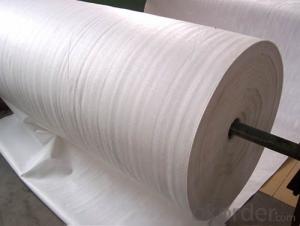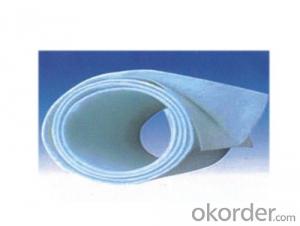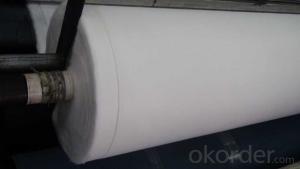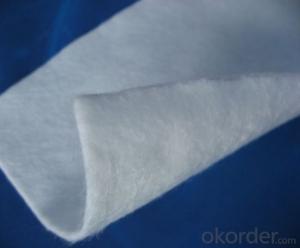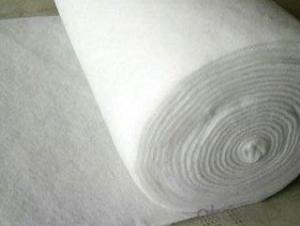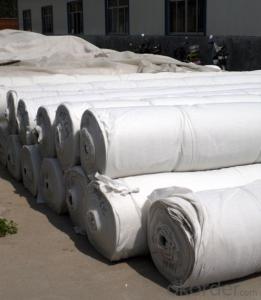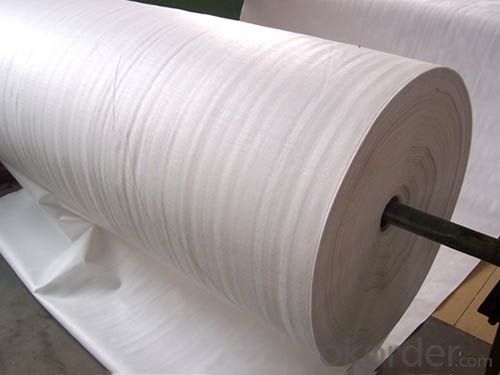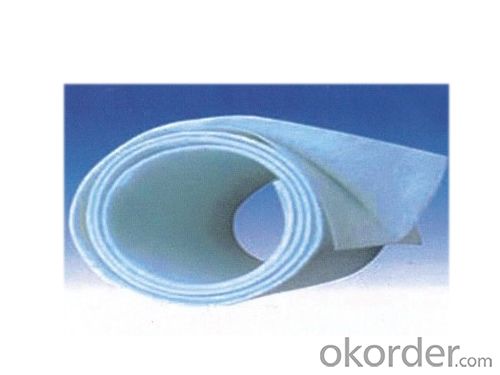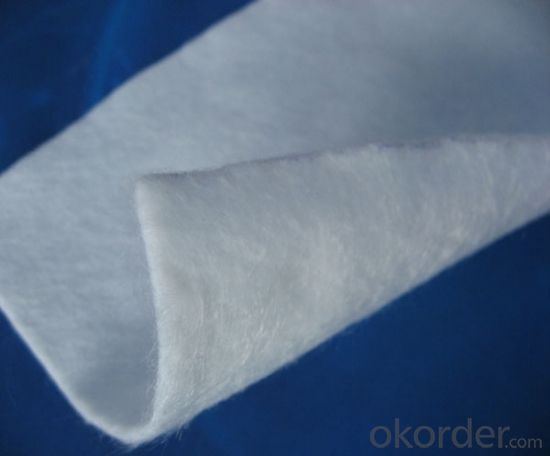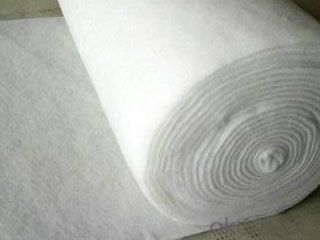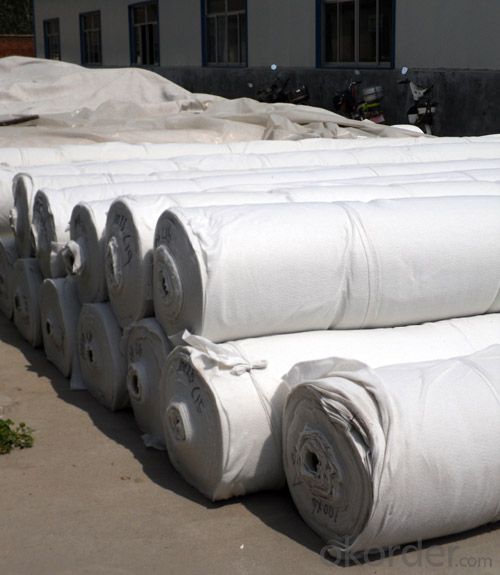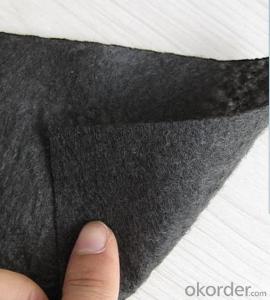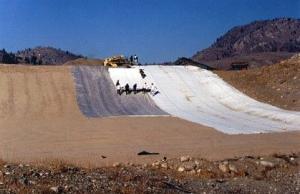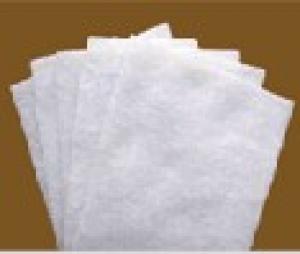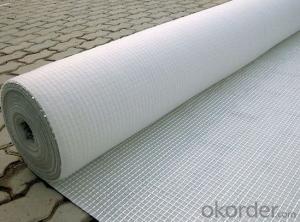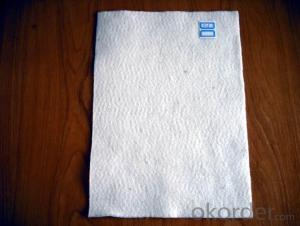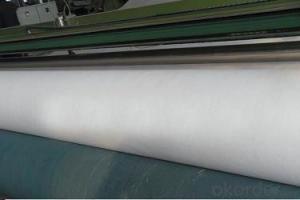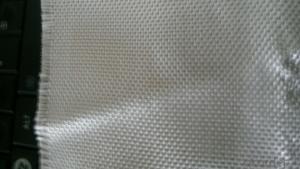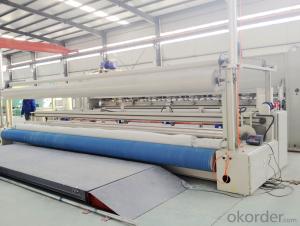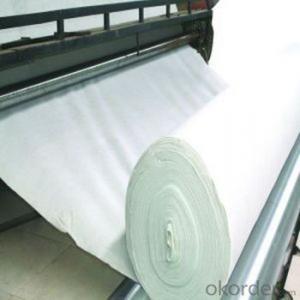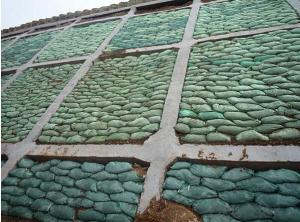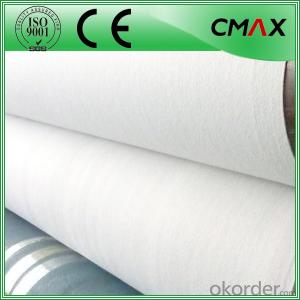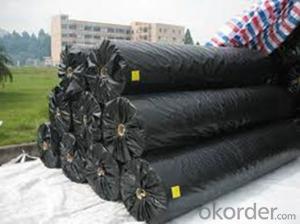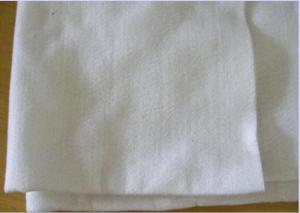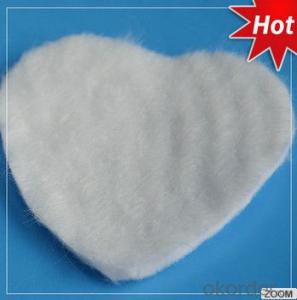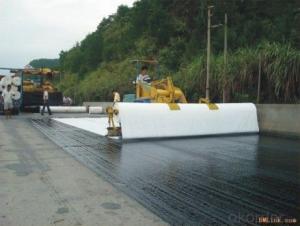Woven Geotextile Price for Non Woven Geotextile Bag / Filament Non Woven Geotextile for Environmental Protection
- Loading Port:
- Tianjin
- Payment Terms:
- TT OR LC
- Min Order Qty:
- 10000 m²
- Supply Capability:
- 300000 m²/month
OKorder Service Pledge
OKorder Financial Service
You Might Also Like
Description of Filament non Woven Geotextile
The filtration layer of the dykes, river canal, seacoast, concrete slope, retaining walls. At the same time of preventing the clay granule from passing, it allows the water and the gas pass through freely.
Main Features of Filament non Woven Geotextile
The isolation of the railway dregs and the roadbed, roadbed and the soft base, surface of the
airdrome and parking lot and the groundsill, different dam materials. It isolates the soil and the gravel of two kinds different granule pathway from the groundsill or other buildings.
1) Weight / Mass: 70g/m2-800g/m2 .
2) Width: Within 6 m (0.5m-6m).
3) Length: 50m-200m/roll (as request).
4) Material: PP and PE
5) Color: Black , green,white , grey, others
6) Manufacturing method: extrude, woven.
Specifications of High Quatity Non Woven Geotextile
The highway, railway, soil-stone dam, breakwater, airport, backfill soil of retaining wall, slope protection, etc in which distributes the earth stress, prevents the side-displacement of the earth body and improves the earth body stability.
1.width:1m~8m, length: at your request
2.Color: white, black, grey.
100 | 150 | 200 | 250 | 300 | 350 | 400 | 450 | 500 | 600 | 800 | NOTE | |
BASIS WEIGHT TOLERANCE (%) | -8 | -8 | -8 | -8 | -7 | -7 | -7 | -7 | -6 | -6 | -6 | |
THICKNESS ≥MM | 0.9 | 1.3 | 1.7 | 2.1 | 2.4 | 2.7 | 3.0 | 3.3 | 3.6 | 4.1 | 5.0 | |
TENSILE STRENGTH AT BREAKING ≥KN/m | 10 | 25 | 30 | 40 | 60 | 80 | 100 | 120 | 140 | 160 | 200 | |
CBR PLUNGER STRENGTH ≥KN | 0.3 | 0.6 | 0.9 | 1.2 | 1.5 | 1.8 | 2.1 | 2.4 | 2.7 | 3.2 | 4.0 | |
TEARING STRENGTH ≥KN | 0.08 | 0.12 | 0.16 | 0.20 | 0.24 | 0.28 | 0.33 | 0.38 | 0.42 | 0.46 | 0.60 | |
BREADTH TOLERANCE (%) | -0.5 | |||||||||||
ELONGATION AT BREAKING (%) | 15 -100 | MD&CD | ||||||||||
EOS O90mm | 0.03-0.8 | |||||||||||
VERTICAL PERMEABILITY (CM/S) | K×(101~~103) | K=1.0-9.9 | ||||||||||
Applications of Filament non Woven Geotextile
1.It prevents the bank from being washed out, protects the bank and the bottom, prevents the water and soil from being washed away.
2.Geotextile can strengthen tensile strength and anti-deformation abilities of soil, enhance stability of building structure to improve soil quality.
3.It can diffuse, transfer and decomposite pressure effectively to prevent the soil destroyed by external factors.
4.Prevent confusion between the upper and lower sand, soil and concrete.
5.High permeability: in soil water under pressure of soil and water, it can still maintain good water permeability.
6.Anti-corrosion - it’s made of polypropylene, polyester and other synthetic, acid and alkali resistance, anti-corrosion, anti-moth and antioxidant.
7.Easy construction---it’s light and convenient and easy to operate.
Images of Filament non Woven Geotextile
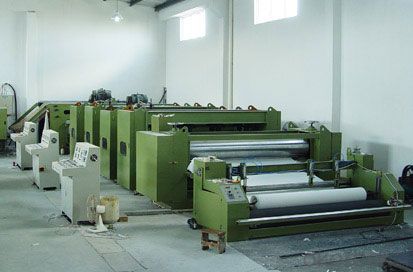
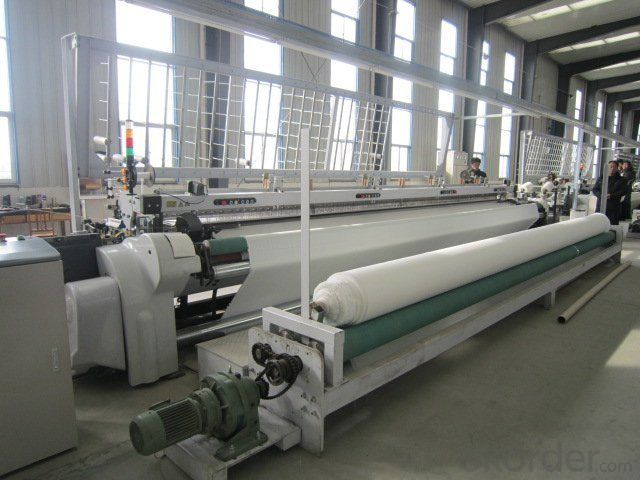
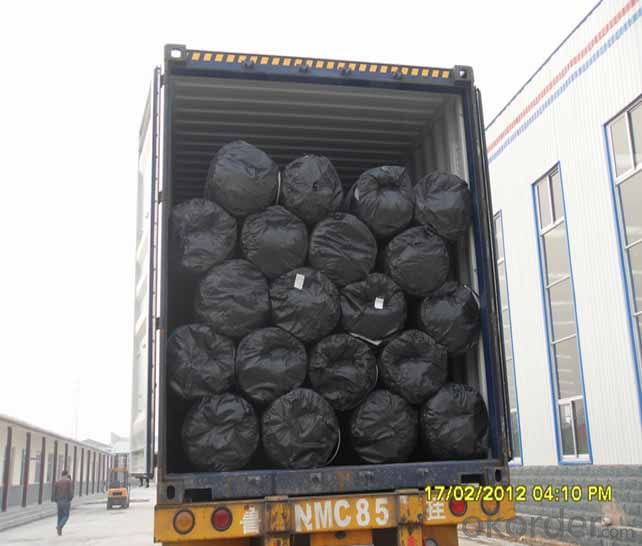
RFQ
1. Do you supply free samples for customers?
Yes,we will supply free samples for you.Please send your address for us.
2. How Many years experience do you have?
We have been exported to more than 20 countries in the past 15 years.
3. How long do we usually reply your request?
We always reply our customer within 24 hours.
- Q: What are the different geotextile reinforcement techniques for slopes?
- There are several geotextile reinforcement techniques for slopes, including slope stabilization using geotextile wraps, slope reinforcement with geotextile grids, and slope erosion control using geotextile blankets. These techniques involve the use of geotextile materials to enhance the stability and performance of slopes, preventing erosion and promoting long-term stability.
- Q: How do geotextiles help with reinforcement of geotextile tubes?
- Geotextiles help with the reinforcement of geotextile tubes by providing strength, stability, and durability to the structure. They act as a barrier against soil erosion and provide a layer of protection for the geotextile tube. Additionally, geotextiles distribute the stresses evenly throughout the structure, improving its load-bearing capacity and preventing potential failures.
- Q: Today someone told me about a boyfriend, said to be geotextile. I wonder, geotextile cloth is what cloth? Is there there? Why is it used More
- Geotextile geotextile, also known as geotextile, it is made of synthetic fibers through the needle or woven from the permeability of geosynthetics. Finished cloth for the cloth, the general width of 4-6 meters, the length of 50-100 meters. Geotextile is divided into a woven geotextile and non-woven geotextile. Geotextile has excellent filtration, isolation, reinforcement protection, high tensile strength, good permeability, high temperature, anti-freeze, anti-aging, corrosion resistance. Divided into: non-woven geotextile, a textile geotextile (reinforced geotextile), warp knitted geotextile with demand can contact: Fang Lingyan Tel:
- Q: How do geotextiles contribute to pavement design?
- Geotextiles play a crucial role in pavement design by providing various benefits. They help in enhancing the structural integrity of the pavement by distributing loads more uniformly, minimizing stress and preventing cracking. Geotextiles also act as a separator, preventing the mixing of subgrade soil with the overlying pavement layers. Additionally, they aid in filtration by allowing water to pass through and drain efficiently, preventing water buildup and potential damage. Overall, geotextiles contribute to the longevity and durability of pavements by improving their performance and reducing maintenance needs.
- Q: Can geotextiles be used in underground storage tank installations?
- Yes, geotextiles can be used in underground storage tank installations. Geotextiles are commonly used as a protective barrier between the tank and the surrounding soil, providing filtration and separation functions. They can help prevent soil erosion, control groundwater flow, and provide additional stability to the tank system.
- Q: How do geotextiles enhance the performance of retaining walls?
- Geotextiles enhance the performance of retaining walls by providing reinforcement and stability to the structure. They act as a barrier against soil erosion and prevent the loss of fine particles, thus improving the overall durability and strength of the retaining wall. Additionally, geotextiles help in the efficient drainage of water, reducing hydrostatic pressure and preventing the buildup of excess moisture behind the wall, which can compromise its structural integrity.
- Q: How do geotextiles improve the performance of pavements?
- Geotextiles improve the performance of pavements by providing reinforcement, stabilization, and filtration. They enhance the strength and load-bearing capacity of the pavement by distributing the applied load more evenly, reducing the likelihood of rutting and cracking. Geotextiles also prevent the intermixing of different layers of pavement materials, maintaining the integrity of the structure. Additionally, they promote drainage and filtration, preventing the accumulation of water and reducing the risk of damage caused by moisture.
- Q: 800g / m2 non-woven geotextile vertical permeability coefficient is generally how much
- 800g / m2 non-woven geotextile vertical permeability coefficient is: 6.1 × 10-2
- Q: Can geotextiles be used in pond and lake liners?
- Yes, geotextiles can be used in pond and lake liners. Geotextiles are commonly used as a protective layer in pond and lake liners to prevent punctures or damage to the liner material. They can help to enhance the durability and longevity of the liner, while also providing additional benefits such as filtration and drainage.
- Q: How are geotextiles tested for strength and durability?
- Geotextiles are tested for strength and durability through various methods such as tensile testing, puncture resistance testing, tear resistance testing, and abrasion resistance testing. These tests involve subjecting the geotextiles to controlled forces, pressures, and wear to assess their ability to withstand different environmental conditions and loads.
Send your message to us
Woven Geotextile Price for Non Woven Geotextile Bag / Filament Non Woven Geotextile for Environmental Protection
- Loading Port:
- Tianjin
- Payment Terms:
- TT OR LC
- Min Order Qty:
- 10000 m²
- Supply Capability:
- 300000 m²/month
OKorder Service Pledge
OKorder Financial Service
Similar products
Hot products
Hot Searches
Related keywords
